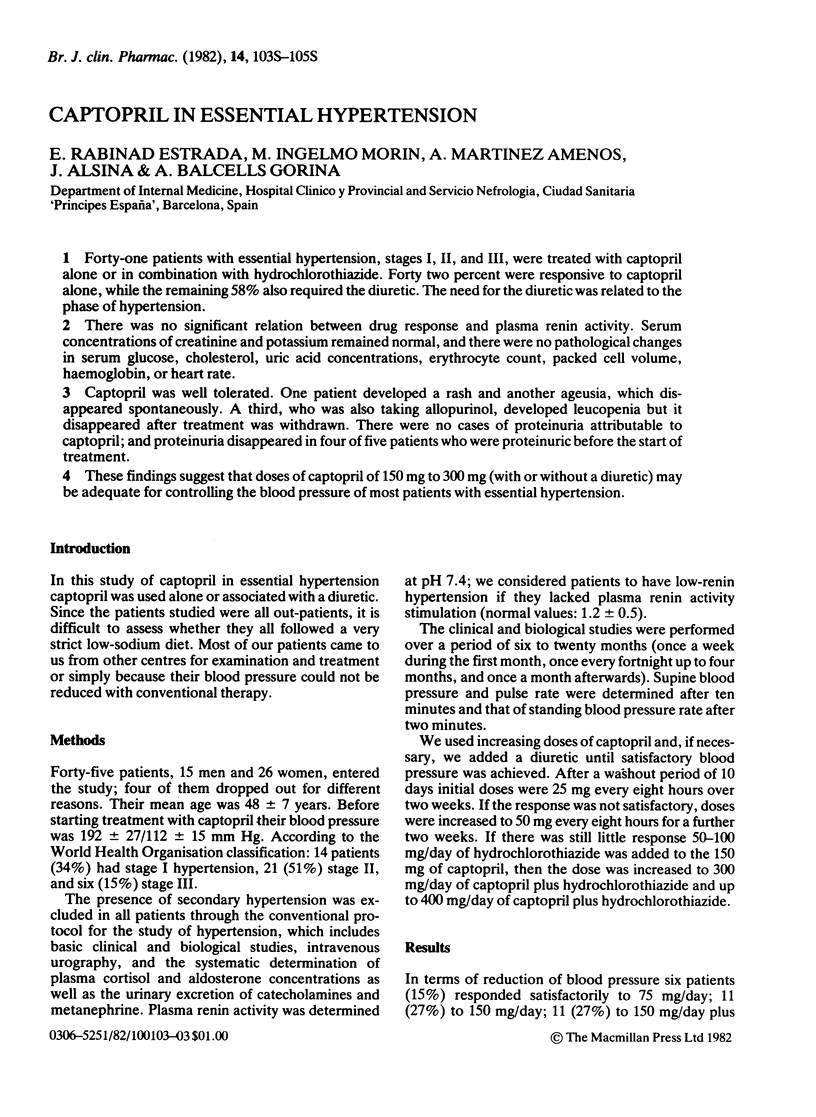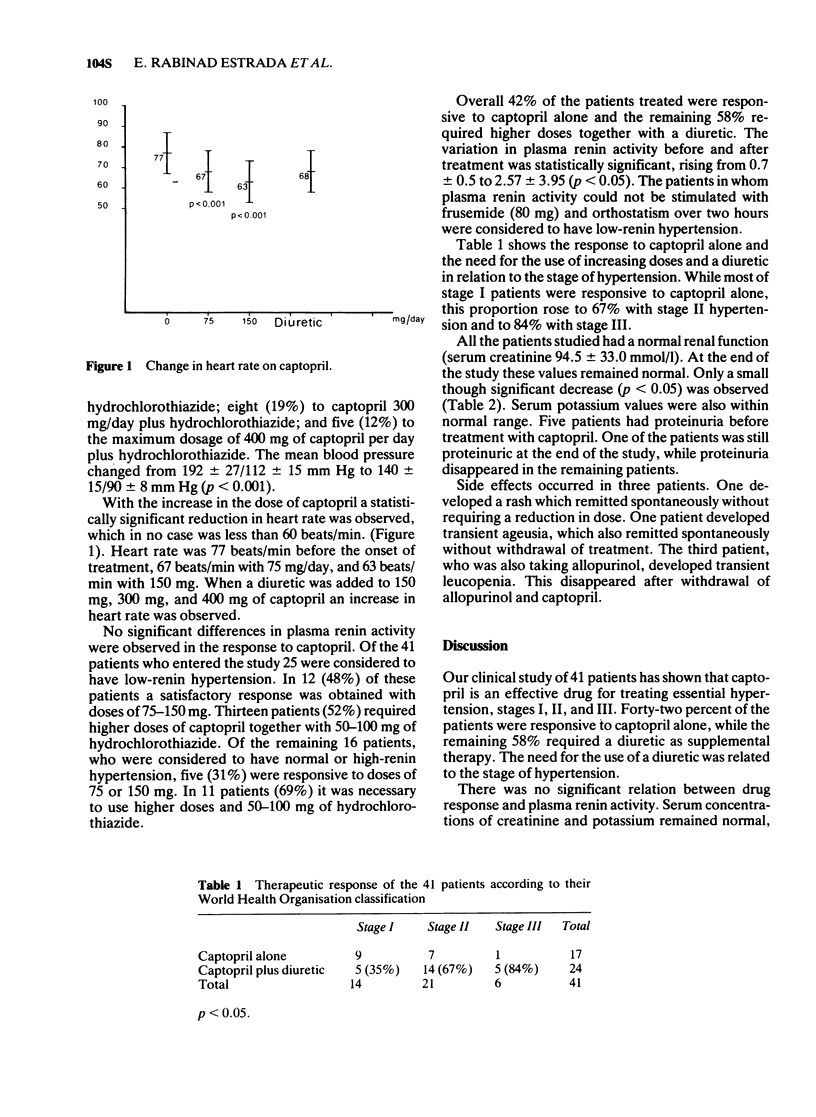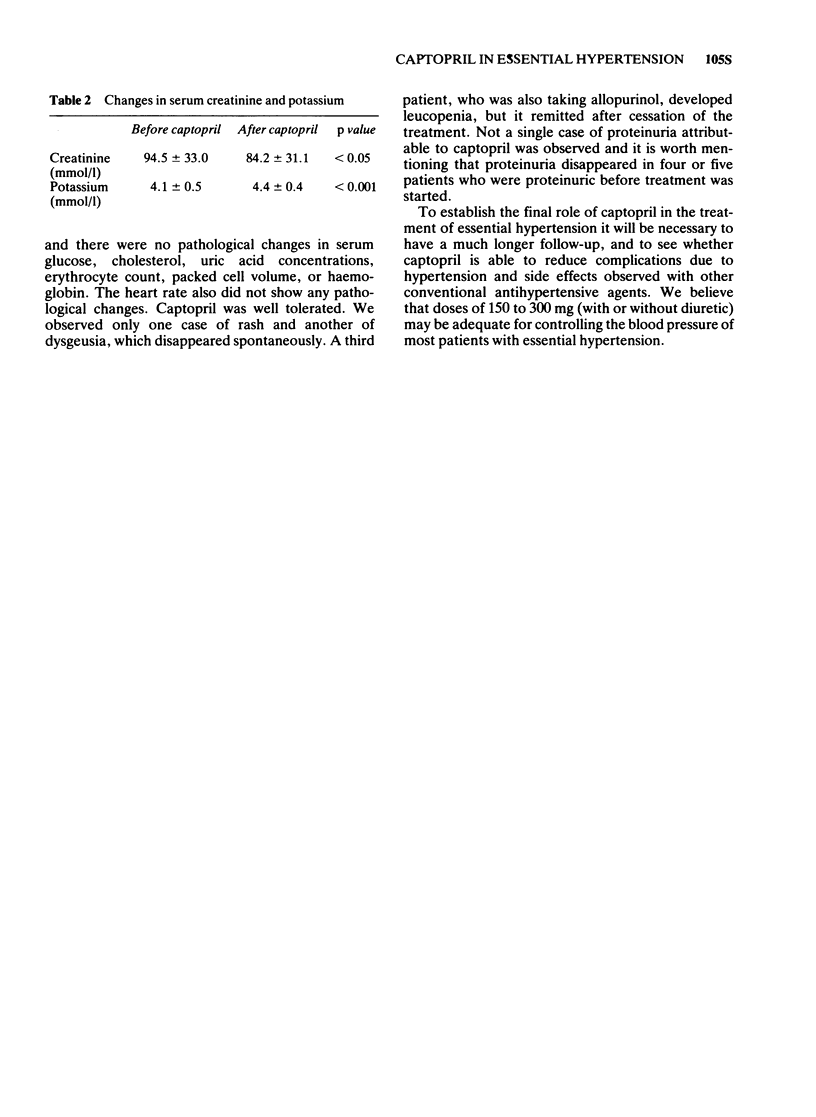Abstract
1 Forty-one patients with essential hypertension, stages I, II, and III, were treated with captopril alone or in combination with hydrochlorothiazide. Forty two percent were responsive to captopril alone, while the remaining 58% also required the diuretic. The need for the diuretic was related to the phase of hypertension.
2 There was no significant relation between drug response and plasma renin activity. Serum concentrations of creatinine and potassium remained normal, and there were no pathological changes in serum glucose, cholesterol, uric acid concentrations, erythrocyte count, packed cell volume, haemoglobin, or heart rate.
3 Captopril was well tolerated. One patient developed a rash and another ageusia, which disappeared spontaneously. A third, who was also taking allopurinol, developed leucopenia but it disappeared after treatment was withdrawn. There were no cases of proteinuria attributable to captopril; and proteinuria disappeared in four of five patients who were proteinuric before the start of treatment.
4 These findings suggest that doses of captopril of 150 mg to 300 mg (with or without a diuretic) may be adequate for controlling the blood pressure of most patients with essential hypertension.
Full text
PDF




